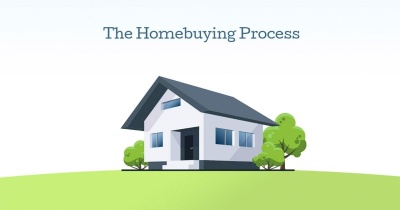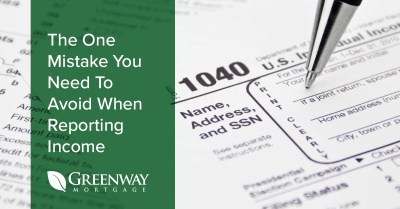

Buying your first home is a monumental step in life, brimming with excitement and a touch of trepidation. It's a decision that carries both the thrill of newfound independence and the weight of significant responsibility.
As you embark on this journey, it's normal to experience a mix of emotions, but fear not, for you are not alone. We understand the blend of excitement and overwhelm that accompanies this milestone, which is precisely why we're here to assist you every step of the way.
At Greenway Mortgage, we believe the path to homeownership should be paved with guidance and support. Whether you're at the beginning of your savings journey or have already envisioned your dream home, our arsenal of tools and resources has been curated with you in mind. Our mission is simple yet profound – to empower you to unlock the doors of your first home, enabling you to embark on a new chapter of your life.
We have a variety of tools and resources to help you through the experience. Whether you’re just starting to save, or you already have a house in mind, we can help you get your keys to your first home. Check out our most popular home loan options for First-Time Home Buyers here!
Did You Know There are First-Time Home Buyer Perks?
Greenway makes buying for the first-time easy! Check out some of our First-Time Home Buyer Programs here.
-
Conventional 97 First-Time Home Buyer Program: 3% down payment regardless of income levels or geographic location. Learn more about our Conventional 97 First-time home buyer program here.
-
FHA Mortgage: These loans are designed to help first-time homebuyers and experienced homeowners alike by providing them with a low-down payment option. FHA mortgage insurance serves as protection for lenders in the event of a homeowner defaulting on their home loan. Click here to learn more about the FHA Mortgage.
-
The HomeReadyProgram: Helping More Buyers Achieve Homeownership! FHA alternative designed to help creditworthy homebuyers with limited income in designated areas.Click here to learn more about the HomeReady Program.
-
NJ Conventional DPA Program: Qualified clients can receive $15,000 to be used towards down payment and closing with affordable mortgage insurance premiums that follows conventional mortgage guidelines. Click here to learn more about our NJ Conventional DPA Program.
-
NJ First-Generation Down Payment Assistance Program: When paired with an NJHMFA First Mortgage and the Down Payment Assistance Program, eligible homebuyers can receive up to $22,000 in assistance! Click here to learn more about the NJ First-Generation DPA Program.
You Can Check out all our First-Time Homebuyer Resources here
Bottom Line:
While your journey towards homeownership can feel a bit overwhelming at times, know that you are not facing it alone. Greenway Mortgage and our team of expert loan officers are 100% committed to helping you make informed decisions, offering valuable tools and resources along the way. Together, we'll transform your dreams into a tangible reality, ensuring that you hold the keys to your first home with confidence and pride. Welcome to the world of homeownership, where a world of possibilities awaits.

Let’s take a stroll through the homebuying process. At first, it may seem confusing, particularly if you’ve never purchased a home before. But for those of us in the business, it's a straightforward path with clear milestones.
Are you ready to explore the homebuying process? Let’s break it down!
Step #1: Pre-Qualification
Pre-qualification involves a review of your finances to determine how much you may qualify to borrow for your home purchase. We can make this quick assessment verbally, without verifying your income, assets and credit. While a pre-qualification is helpful, it’s important to complete the next step before serious house hunting.
Step #2: Pre-Approval
Like a regular mortgage application, a pre-approval requires documentation to verify your income, assets, and credit, including bank statements, pay stubs and federal tax returns. A pre-approval is far more valuable than a simple pre-qualification because it:
- Gets the process of formal verifications out of the way so you can concentrate on finding the right home;
- Assures you are looking at homes in your true comfort range; and
- Sets you apart from other potential buyers who may not yet be approved to borrow funds for the purchase.
All in all, getting an upfront loan approval will help you beat out the competition, negotiate with power and let you know how much you can afford.
Step #3: Find Your Dream Home
This is where the fun begins! Looking at homes and imagining them as your own can be an exciting process.
It can be challenging, too, when another buyer falls in love with the same house! Being prepared with a pre-approval will enable you to focus on homes you can comfortably afford and act quickly when you’re ready to make an offer.
It helps to be sure of the type of home, neighborhood and amenities or features you want so you can act quickly when you know you’ve found the right house, especially in competitive markets.
PRO TIP: Shop by monthly payment instead of price. Your monthly payment will typically include taxes, insurance, and other costs, like homeowners’ association, condominium, or co-op fees. Those costs can vary from house to house. The payment will determine your final loan approval, so it’s the most important factor to consider.
Step #4: The Home Inspection
It’s always a good idea to arrange a home inspection by a licensed engineer or inspector on any property you’re seriously considering or are placing under contract. An experienced inspector can identify and discuss potential hazards or conditions that may not be otherwise apparent. Click here to learn about Home Inspections and what you should expect from one.
It’s your choice to complete the inspection before you make an offer or as a contingency of your contract. In either case, if any significant issues are discovered, the cost of and/or responsibility for repairs can be negotiated accordingly.
Even if no issues are discovered, it’s well worth the cost of an inspection to be reasonably well assured you won’t have unexpected repairs soon after purchasing your home.
Step #5 Purchase and Sales Agreement
The Purchase and Sales Agreement or Sales Contract is the legally binding document that stipulates the price, terms, and conditions of the transaction between the buyer and seller.
Depending on the region, either a real estate agent or an attorney will draft the agreement. Review it to ensure proper contingencies of the sale are listed, such as your right to an inspection and a financing clause. If you’re uncertain about the contract terms or your obligations, it’s a good idea to have it reviewed by your attorney before signing.
Step #6 Finalize the Loan Application
Finalizing your loan application becomes relatively easy after you’ve gone through the pre-approval process because you have already submitted the necessary financial documents pertaining to income and savings. Depending on how much time has passed since your pre-approval, you may simply need to provide your most recent pay stubs and bank statements.
Step #7: Property Appraisal
The property appraisal assures the lender that the property value is sufficient to be used as collateral for the loan.
The appraiser researches comparable, recently-sold properties to support the price agreed upon in your Sales Contract. The appraiser will also look for any obvious structural or conditional issues that may impact the health and safety of occupants or the marketability of the home.
Step #8: Final Loan Approval
Final loan approval will make two primary assurances:
- Any conditions relative to the property you’ve found are cleared, and
- Your income and assets are still sufficient to cover the total monthly expense and financial reserve requirements.
The underwriter will review the contract, appraisal, title work, etc., before issuing the final loan approval.
Step #9: Insurance
The lender must receive a binder evidencing your homeowners insurance coverage and showing the cost. It’s best to arrange for insurance well before closing to prevent delays. In some cases, choosing your insurance agent and knowing the cost of insurance is required prior to the final loan approval.
Step #10: Closing Disclosure/Document Preparation
After giving final approval, the lender prepares the official documents and disclosures to be signed at your final closing and settlement. Among these is the Closing Disclosure, which you will receive at least 3 days before your closing date. It will list all charges and expenses, so you’ll know your exact loan costs and cash requirements prior to closing.
Step #11: Closing
The closing is where you sign the documents and gain ownership of your home. Closings can occur in a few ways:
- In person with a title agent, bank attorney or notary;
- Online as an “e-closing”; or
- Hybrid, with some documents signed in person and others online.
Either way, after the closing occurs, the home will be yours!
Step #12: Move-In Day!
Congratulations! The day you’ve waited for is here – move-in day! As you’re packing, remember to arrange for the utilities to be transferred into your name and turned on so your house will be ready to become the place you want to be – your new home!
Bottom Line:
If you have questions or would like to take a step today, please reach out. The team at Greenway Mortgage is happy to help.

What does home price growth mean for you?
In July 2022, rapidly rising interest rates triggered a sudden slowdown in the upward trajectory of home prices and the intense bidding wars that accompanied them. Remarkably, 92% of U.S. markets witnessed monthly home price drops throughout the year. It was a significant shift in the market dynamics.
However, the tide has turned since then. The latest reports indicate that prices are now on the rise in 92% of U.S. markets.* This reversal brings new opportunities and considerations for buyers and sellers alike. (*Source: Black Knight, Inc.)
What Contributed To This Change?
-
Moderating interest rates still well below long-term averages
-
Continuing demand from buyers remains robust
-
A shortage of homes for sale
-
A strong labor market
This trend reversal marks a great time to get into the market for both home buyers and sellers.
The First Step: Getting Pre-Approved
Before you search for your next home, we would love to help you with a mortgage pre-approval so you can:
-
Discover a price range that's comfortable for you
-
Stand out from other buyers
-
Negotiate your best deal
What Do You Need For A Pre-Approval?
In order to get you pre-approved we need the documentation below. All of this and more will be needed once your loan is in process so might as well pull it together now.
-
Pay stubs – last 30 days
-
W2s – last 2 years
-
Federal tax returns – last 2 years, all pages and schedules
-
Bank statements – Last 2 months, all pages
-
Realtor and attorney contact info
-
Copy of photo ID – must be legible
Thinking About Selling Your Home?
We can offer insight on market conditions for selling your current home, too.
Bottom Line:
Reach out to our experienced team to discuss how the current market conditions may impact your real estate plans. We're here to help you navigate the complexities and seize the opportunities presented by the evolving housing market.
Home Buyer Resources
To encourage and educate aspiring home buyers, Greenway offers free information and resources. You can visit us online to learn more.
-
FREE First-Time Home Buyer eBOOK – Includes handy resources & checklists
-
First-Time Home Buyer Resources – Learn about our First-Time Home Buyer Programs
-
Home Buying Comparison Chart - Take this chart with you during your home search
-
Buying Your First Home – Learn everything you need to know
-
Mortgage Calculators – We have an entire library of easy-to-use calculators!
-
Mortgage Terms – Get up to speed on some mortgage terminology
-
Ready to get started? Apply Now using our online application.
June is Homeownership Month: Celebrating the Benefits of Owning a Home

National Homeownership comes around every year in June. This annual celebration shines a spotlight on the significance of owning a home and the countless benefits it brings to individuals, families, and communities. By becoming a homeowner, people get a step closer to the American dream. Let's explore the origins of Homeownership Month, delve into the advantages of homeownership, and showcase some compelling statistics that highlight its positive impact.
The Origins of Homeownership Month
National Homeownership Month started as a week-long celebration of homeownership during the Clinton administration in 1995.
It was not until 2002, that it was officially recognized by the U.S. government to promote the value of homeownership and raise awareness about the opportunities it presents. It serves as a reminder of the American Dream and the importance of having a place to call your own.
Throughout June, various organizations, government agencies, and housing advocates come together to provide resources, education, and support to those aspiring to become homeowners.
What Are the Non-Financial Benefits of Homeownership?
Owning a home brings you and your family happiness, satisfaction, and pride.
- Pride of Ownership: A place to call your own. You’ll be able to customize it according to your likes and personality without anyone telling you how.
- Civic Participation: Homeownership creates stability, and a sense of community, and increases civic engagement.
- Provides Stability and creates a positive environment for families.
- Provides a Safe Place: Owning gives you a sense of security and privacy. Two things that have become very valuable in our lives.
What Are the Financial Benefits of Homeownership?
Buying a home is also an investment in your and your family’s financial future.
- Forced Savings: Your monthly mortgage payment is a form of ‘forced savings’ which builds your net worth with every payment!
- Home Equity: Homeownership builds equity every month. You can use that equity to start a business, pay off debt, send your kids to college and so much more.
- Appreciation: Home prices increase annually which helps to create a safety net.
- Net worth: A homeowner's net worth is 44x greater than renters! This gives you the financial freedom to invest.
- Stability: Rent prices may increase each year. However, a fixed mortgage payment allows you to save for future projects and guard against inflation.
- Tax Benefits: Speak with your CPA to discuss the possible tax benefits homeownership can bring you.
Homeownership Stats
- Homeownership in America is constantly on the move, in-fact, some 65.8% of Americans own a home as of 2022.
- Millennials represent 43% of homebuyers, the highest share of any generation.
- The average age of first-time homebuyers in the US is 36 years old according to the National Associate of Realtors (NAR).
- U.S. homeowners on average have about $270,000 in equity, nearly $90,000 more than they had at the onset of the pandemic according to a CoreLogic report.
Bottom Line:
As we celebrate Homeownership Month in June, let us recognize the tremendous benefits that owning a home provides. From financial stability and tax advantages to a sense of community and personalization, homeownership plays a vital role in shaping individuals' lives and enhancing communities. Let us continue to support and empower individuals on their homeownership journey, creating a brighter future for all.
Home Buyer Resources
To encourage and educate aspiring home buyers, Greenway offers free information and resources. You can visit us online to learn more.
-
FREE First-Time Home Buyer eBOOK – Includes handy resources & checklists
-
First-Time Home Buyer Resources – Learn about our First-Time Home Buyer Programs
-
Home Buying Comparison Chart - Take this chart with you during your home search
-
Buying Your First Home – Learn everything you need to know
-
Refinance Your Mortgage - Get a free loan quote
-
Renovation Mortgage Programs - Put your home improvement plan into action
-
Construction Loans - Can't find your dream home? Build it with a Construction Loan
-
FREE Construction Loan Guide Book - Learn everything you need to know about construction loans and the process
-
Mortgage Calculators – We have an entire library of easy-to-use calculators!
-
Mortgage Terms – Get up to speed on some mortgage terminology
-
When Can You Cancel Your Private Mortgage Insurance? - Find out by using our easy calculator
-
Ready to get started? Apply Now using our online application.

There’s an important rule of thumb about income when it comes to applying for a mortgage. The numbers you report to Uncle Sam are the numbers lenders will use when making a decision about mortgage qualification.
Many borrowers make the mistake of confusing actual income with reported income. Think of actual income as gross income from full-time, part-time or self-employment, or some combination of the three. This is the total number before you write off any expenses at tax time.
For example, suppose your full-time salary is $70,000 and you make another $20,000 from your side job. Your actual income is $90,000. But that’s not the number we use when evaluating your mortgage application.
Reported Income Is All That Matters
At tax time, your accountant will probably write off work expenses. If you claim $15,000 in unreimbursed expenses for your full-time, salaried position and $5,000 from your side job, the taxes you pay will be based on an income of $70,000. That’s your reported income, which is what lenders care about.
Suppose you use Schedule C (Form 1040) to report your income from the company you run as a sole proprietor. You make $100,000, which sounds great. But you have to invest $30,000 into marketing, equipment, phone and internet in order to make that $100,000. You write off these expenses on Schedule C.
Your actual income is $100,000, but your reported income on your tax return is $70,000. That’s the number Greenway Mortgage or any other lender will use in your mortgage application.
To be clear, we’re not saying you shouldn’t claim every legitimate deduction to reduce your tax burden. You just need to understand that deductions reduce your reported income, which could affect your ability to qualify for a mortgage and your overall buying power.
If you’re thinking about buying a home and your accountant tends to be very aggressive in looking for deductions, discuss this with your Greenway Mortgage loan officer and your accountant, and be careful about the expenses you claim.
Tax Return Numbers Must Match Mortgage Application Numbers
We’ve also had clients who said, for example, they made $70,000 last year. But when we looked at their tax return, we find out that they reported a loss from their business. You can’t then apply for a mortgage, which is likely to be government-sponsored by Fannie Mae or Freddie Mac, and claim that you made $70,000. The government already knows that you reported a loss.
In other words, you can’t say one thing on your tax return and say something else on your mortgage application.
Another common point of confusion is unreported income. Borrowers will come to us and say that they make a lot of cash off the books, whether it involves bartending, landscaping or any other type of work for which they’re paid in cash.
If you don’t report that income to the government, and you don’t pay taxes on it, you can’t use it when you apply for a mortgage. Period.
Mortgage Lenders Should Ask for Your Tax Returns
They should, but not all do. Instead, they ask for information from a W2 or a recent pay stub. But tax returns are the only documents that paint a full and accurate income picture that can be used when evaluating a mortgage application.
This is why a pre-approval carries so much more weight than a pre-qualification. Pre-qualification is based on a phone conversation and gives you a general idea of how much you would qualify to borrow. Pre-approval is based on a thorough review of documentation, including your tax returns, and shows exactly how much you would qualify to borrow.
If you have questions about actual income vs. reported income, or you’re thinking of buying a home, contact us to start the pre-qualification process. And please, have two years of tax returns handy.

.png)



.png)
.png)
.png)
.png)